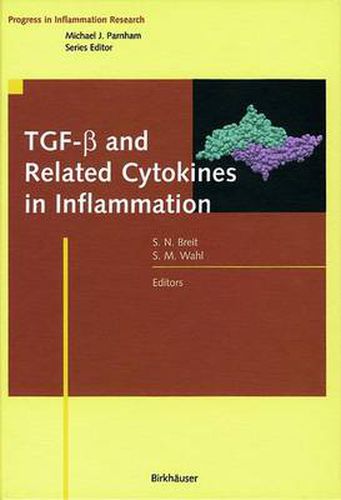Readings Newsletter
Become a Readings Member to make your shopping experience even easier.
Sign in or sign up for free!
You’re not far away from qualifying for FREE standard shipping within Australia
You’ve qualified for FREE standard shipping within Australia
The cart is loading…






This title is printed to order. This book may have been self-published. If so, we cannot guarantee the quality of the content. In the main most books will have gone through the editing process however some may not. We therefore suggest that you be aware of this before ordering this book. If in doubt check either the author or publisher’s details as we are unable to accept any returns unless they are faulty. Please contact us if you have any questions.
The TGF-13 superfamily is a large and expanding multigene family which in verte- brates includes the TGF-13 proteins themselves, the bone morphogenetic proteins (BMPs), the growth and differentiation factors (GDF), the activins/inhibins (INH), Mullerian inhibitory substance (MIS), glial derived neurotropic factor (GDNF) and more recently macrophage inhibitory cytokine 1 (MIC-1). They are characterised by conserved structural elements and a broad commonality of function. Major structural elements All members of the TGF-13 superfamily contain as their major structural hallmark a conserved spacing and distribution of seven cysteine residues. This structure is known as the cysteine knot and tethers together regions of the peptide as well as binding the two chains of the dimer to each other. High resolution structures are now available on proteins from three families within this group including glial derived neurotropic factor (GDNF), BMP-7 and several of the TGF-13s. Despite low similarity between some of these proteins (eg, TGF-13s and GDNF are only 13% identical) they share a strikingly similar three dimensional conformation (Fig. 1). These structural elements imbue the protein with some of its familial characteristics. These include its physico-chemical stability due to tight tethering of portions of the peptide chain via criss-crossing disulphide bonds. Much of its surfaces are coated with hydrophobic patches leading to a propensity to bind non-specifically to other proteins as well as to its self. This also causes a marked propensity for aggregation when the recombinant protein is present at high concentration.
$9.00 standard shipping within Australia
FREE standard shipping within Australia for orders over $100.00
Express & International shipping calculated at checkout
This title is printed to order. This book may have been self-published. If so, we cannot guarantee the quality of the content. In the main most books will have gone through the editing process however some may not. We therefore suggest that you be aware of this before ordering this book. If in doubt check either the author or publisher’s details as we are unable to accept any returns unless they are faulty. Please contact us if you have any questions.
The TGF-13 superfamily is a large and expanding multigene family which in verte- brates includes the TGF-13 proteins themselves, the bone morphogenetic proteins (BMPs), the growth and differentiation factors (GDF), the activins/inhibins (INH), Mullerian inhibitory substance (MIS), glial derived neurotropic factor (GDNF) and more recently macrophage inhibitory cytokine 1 (MIC-1). They are characterised by conserved structural elements and a broad commonality of function. Major structural elements All members of the TGF-13 superfamily contain as their major structural hallmark a conserved spacing and distribution of seven cysteine residues. This structure is known as the cysteine knot and tethers together regions of the peptide as well as binding the two chains of the dimer to each other. High resolution structures are now available on proteins from three families within this group including glial derived neurotropic factor (GDNF), BMP-7 and several of the TGF-13s. Despite low similarity between some of these proteins (eg, TGF-13s and GDNF are only 13% identical) they share a strikingly similar three dimensional conformation (Fig. 1). These structural elements imbue the protein with some of its familial characteristics. These include its physico-chemical stability due to tight tethering of portions of the peptide chain via criss-crossing disulphide bonds. Much of its surfaces are coated with hydrophobic patches leading to a propensity to bind non-specifically to other proteins as well as to its self. This also causes a marked propensity for aggregation when the recombinant protein is present at high concentration.